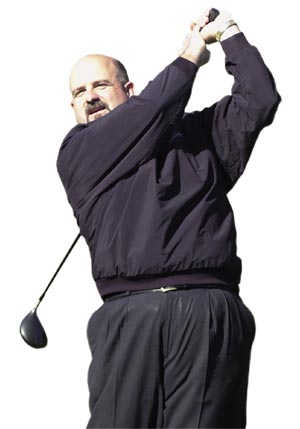Delo’s Divots: First of all, the best way to have success out of
a fairway bunker is not to get into one in the first place. Golf
course architects are no dummies. They strategically narrow the
fairway and place fairway bunkers at the landing area of the
average drive.
First of all, the best way to have success out of a fairway bunker is not to get into one in the first place. Golf course architects are no dummies. They strategically narrow the fairway and place fairway bunkers at the landing area of the average drive.
Now you have to ask yourself: Would you rather hit out of a bunker from 150 yards away or from the grass at 175? For the majority it would be the latter. So why risk hitting into that bunker in the first place? Hit a 3-wood off the tee and eliminate any chance of getting into trouble.
For those of us that just want to hit a driver whenever we can, no matter the fairway bunkers, there are a few things to remember to successfully get out.
First and foremost, look at the lip that you have to carry to get out. That is going to determine what loft of club you are going to be able to hit. If the lip is staring you in the face, don’t try to hit the 5-iron that you need to get to the green. Hit with a 9-iron or wedge to get over the lip and back in the fairway. If there is no lip, you can hit the club that you need to achieve the distance.
Hitting a fairway bunker shot isn’t really any different than one on the grass. You want to have a quiet lower body and keep more weight on the front leg of your stance, and strike the ball before the sand. Don’t try to lift the ball off the sand as that will cause your right shoulder to dip and your weight to stay back, thus causing you to hit the sand before the ball or just “skulling” it completely. Keeping the ball a little farther back in your stance will help ensure that you strike the ball first. But putting it too far back will cause a low trajectory.
You can ad-lib practicing fairway bunkers off a thin, hard lie. Keep your hands ahead, your weight slightly forward and check that ground contact is after contact with the ball.








